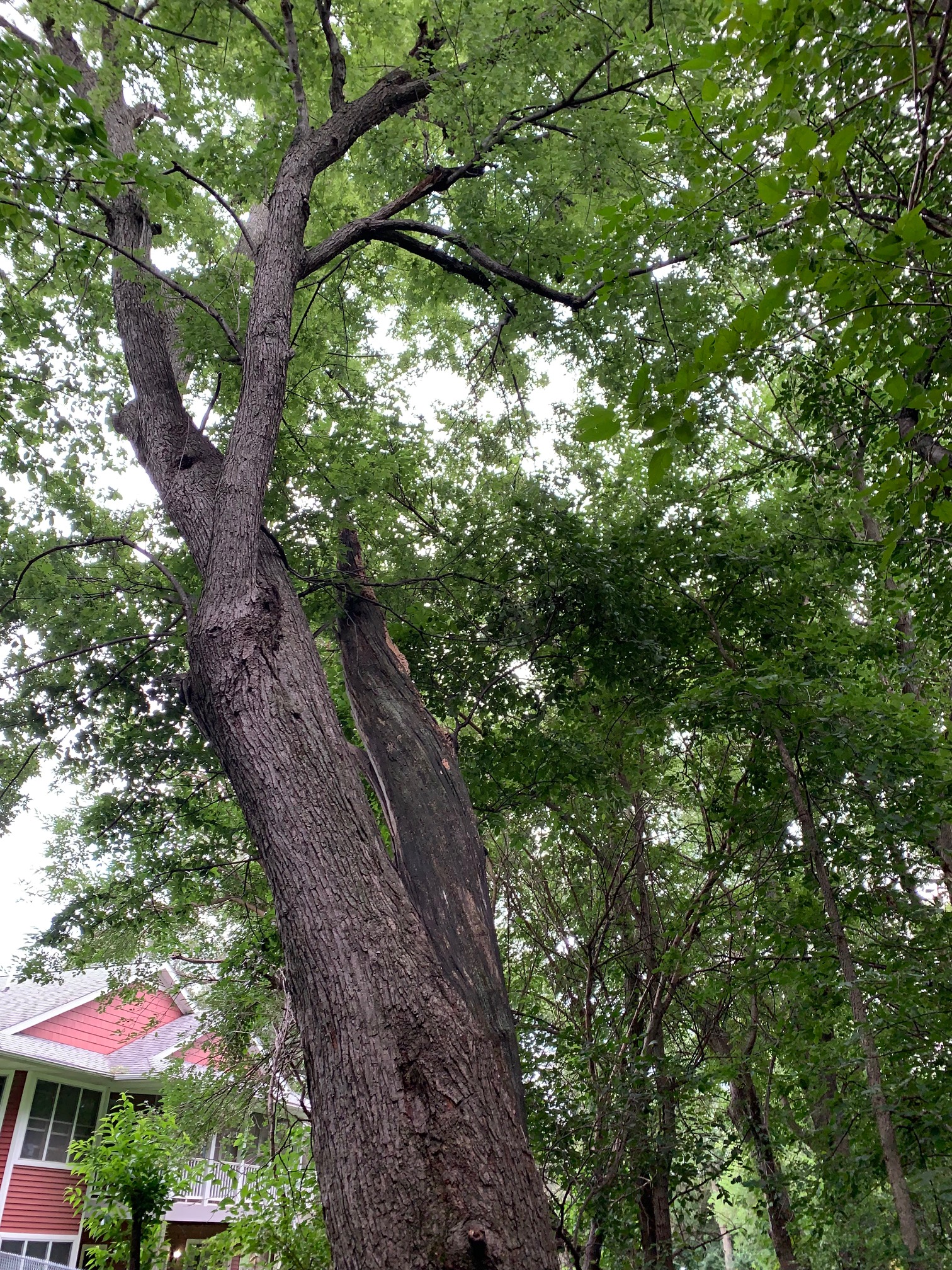Half of Owl Acres is given over to a forest reserve for tax purposes, but more importantly, woods for habitat purposes. The woods run along the west and north sides of the property and make a good windbreak as well. There are several types of trees in the woods, including quite a number of boxelders.
The boxelder (Acer negundo) is a member of the maple family. It doesn’t have Canadian-classic maple leaves though. Its leaves are compound with three to five leaflets and are sometimes confused with poison ivy leaves when the tree is young. That’s probably why one of its alternate names is poison ivy tree. Other names are maple ash, ash-leaf maple, elf maple and a few other iterations. It can be tapped for maple syrup if you can’t find anything else to sweeten your porridge. It’s not the best source, though. Native to North America, the trees are everywhere from Canada to Mexico and from sea to sea. They bloom in March and April with insignificant greenish-yellow flowers that are pollinated by the wind. In the fall, they produce winged samara fruits, each one enclosing a single seed. Known locally as helicopter seeds, these winged ambassadors fly on the wind, spreading the boxelder joy far and wide.
Like many other names the new settlers gave to things in the New World, the boxelder tree was named for plants in Europe. In this case, the wood is said to have reminded them of the European evergreen shrub called common box, and the leaves reminded them of the elder bush. Or maybe it’s because their wood isn’t much good for anything but making boxes and cheap furniture out of. The wood is brittle, light-colored, close-grained and soft. One redeeming feature is the red streaks in it, which make it visually interesting when used for making decorative bowls and other pieces on a lathe. Several flutes made of boxelder wood were found in Arizona dating back to the Anasazi people in the eighth century.
Early settlers used the inner bark of the tree in a wash to treat skin ailments. They probably learned this from their native neighbors. They also used the inner bark in tea as an emetic and for respiratory conditions, kidney infections, and to cure paralysis and swellings.
The boxelder is fast-growing, which made builders think it was a good tree to plant in housing developments. They called it “river maple,” or “Manitoba maple,” which sounds quite lovely. The trees did grow quickly, but because they produce copious amounts of samaras, those helicopter seeds you clean out of your gutters, they spread like crazy. The wood is brittle, so branches bend and break, and the trees tend to grow with multiple trunks that have their own ideas about shape and tidiness. Some do grow with a strong central trunk to a height of 30 to 50 feet with a spread of 30 to 50 feet as well, so they make nice shade trees. Their branches sweep upward to form a rounded crown. These attributes may not make you eager to plant them in a suburban lawn, but on Owl Acres, with its open, wildlife-friendly space, they form habitat for over 100 species of moths and butterflies, as well as other insects which then feed the birds. Birds, squirrels and other creatures nest and hide in the boxelders. And, of course, so do boxelder bugs. We’ll probably see some of them in the fall, but they’re mostly harmless.
Photo by Author. Alt text: A large tree trunk goes away vertically and spreads into a green canopy high overhead. A portion of the author’s barn red house is visible nearby. The boxelder has stood on this old farmstead for more than 50 years.
